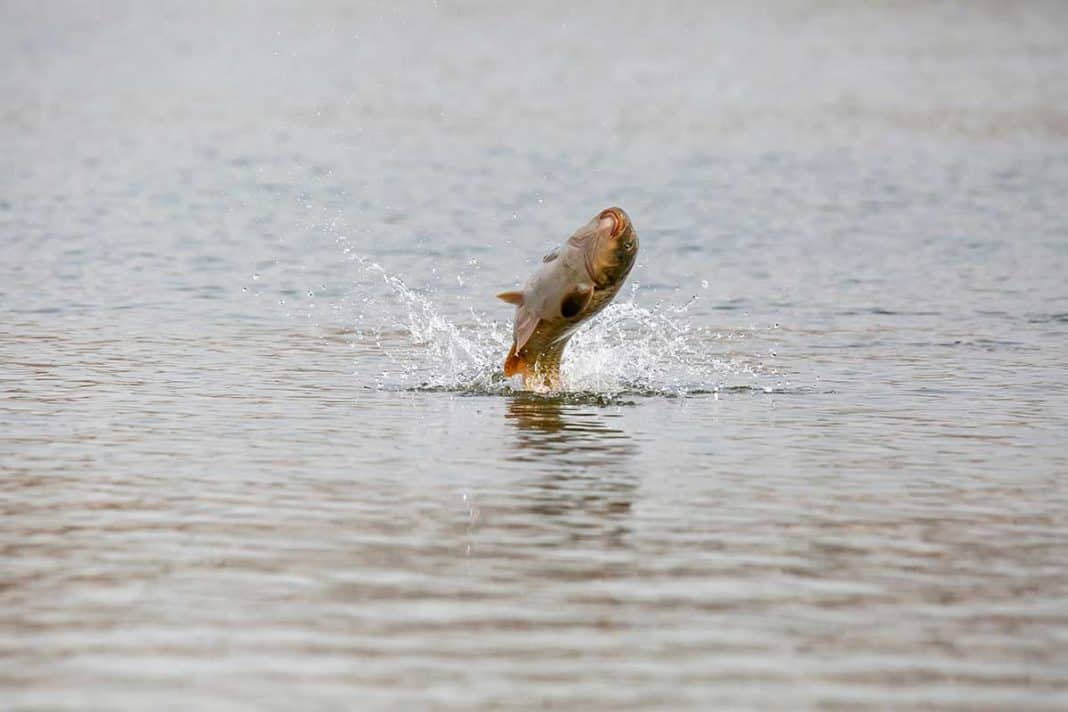MANITOULIN – The potential arrival of the highly invasive Asian carps into the Great Lakes presents a serious threat to the Great Lakes basin. An Asian carps program to address the risk and protect the basin’s integrity was established in May 2012.
The Invasive Species Centre hosted an Asian carps webinar on March 3 as part of its Ontario Invasive Species Forum to provide an update on Fisheries and Oceans (DFO) Canada’s monitoring program as well as share the latest research underway at the University of Toronto, Scarborough Campus.
“Asian carps are among the top invasive species being monitored in Canada for their potential arrival into the Great Lakes,” said Jennifer Wright-Kavanagh, a senior biologist with DFO’s Asian carps program. The program is designed to monitor and manage all four species and was built on four core pillars: the early warning pillar, the prevention pillar, the response pillar and the management pillar.
There are two goals for DFO, Ms. Wright-Kavanagh said. “First, it is to target high risk sites to detect and remove Asian carps, especially grass carp, which is the species which is the most imminent or most risk to the Great Lakes right now and two, to collect baseline community data so we know what the fish community should look like without Asian carps so if they ever do arrive and establish here on the Canadian side of the Great Lakes we can probably assess the impact of that.”
Given the sheer size of the Great Lakes, searching for and finding these species, which may be present in very low numbers, is like trying to find a needle in a haystack, said Ms. Wright-Kavanagh. Thirty-seven sites are sampled each year from May until November based on modeling of tributaries that feature suitable spawning conditions. “Preventing Asian carps from ever arriving is most ideal and is the most cost-effective way but prevention can’t stop everything so we need to be able to detect these fish early and remove them quickly before they have a chance to reproduce or a chance to establish a population,” she said. “That’s why we respond.”
Ms. Wright-Kavanagh pointed out how few grass carps are actually in our lakes. Since the program began in 2012/2013, 29 grass carp have been detected in Canadian waters. Of those 29 fish the majority were sterile so they weren’t able to reproduce. There were no captures in 2019 by DFO crews or anyone else on the water and only one was captured in 2020. This occurred in Jordan Harbour, Lake Ontario. The fish was just over a metre in length and 16 kg in weight. It was later confirmed the fish was a fertile female.
Grass carp have been and still are stocked in some US states and some states require the fish be sterilized, explained Ms. Wright-Kavanagh. “There is a risk of finding both fertile or sterile grass carp. Once we know whether a fish can reproduce we better understand the level of threat. A sterile fish that can’t reproduce does have an impact over its lifetime but a fertile fish poses a much bigger threat and therefore triggers a response action. The response plan has trigger levels based on fertility results, species type and the number captured as well as their life stages. A response may involve conducting additional surveillance efforts or it could also include on the water activities specifically related to electro-fishing and netting and/or eDNA sampling.”
Research informs all four pillars of DFO’s Asian carps program, she explained. “The main focus to date has been research related to prevention, early warning and preparedness for response. Several research projects have been completed or are underway. The research projects have been done collaboratively with DFO scientists, academia, federal/provincial/state agencies and they focus on the arrival, survival, spread and impact of Asian carps in the Great Lakes.”
Dr. Nicholas Mandrak, a professor of biological sciences at University of Toronto, Scarborough spoke about how their research informs risk assessments. Risk assessment was defined as “a procedure to identify likelihood of threats and vulnerabilities and analyze them to ascertain he magnitude of exposures. What is the probability of the risk occurring and what is the magnitude of ecological consequences?”
One study on the establishment and survival of Asian carps showed that tributaries unimpeded for 100 kilometre upstream from the mouth of the river were necessary for spawning, which limited opportunities. Other research asked the question, will climate change influence suitability for spawning? Results showed that hatching time decreases and hatching rates for Asian carps increased by up to 60 percent with warming temperatures.
“Risk management starts with risk assessment determining probability of introduction,” said Dr. Mandrak. “Prevention starts there and continues through arrival, triggering an early detection rapid response to prevent survival. Control measures deal with establishment, spread and magnitude of impact.”
Ph.D. candidate Paul Bzonek is researching non-physical barriers. “We know that we must prevent introductions,” he said. “Prevention is much more effective than management. Research is looking into the use of non-physical deterrents to prevent the dispersal of Asian carps into the Great Lakes, including acoustic fish deterrent. For example, Asian carps are vulnerable to underwater sound and avoid underwater pressure waves.”
Canadian research efforts are more limited than American. “There is less funding available and we have no access to live Asian carps,” Mr. Bzonek noted. “Canadian researchers must coordinate with and augment American research efforts. We will fill in the gaps as innovative deterrents continue to be developed and moving forward, there will be a switch in focus from lab to field studies.”
If you’ve seen an Asian carp or other invasive species in the wild, please contact the Invading Species Hotline at 1-800-563-7711. Visit asiancarp.ca for more information on Asian carps.





